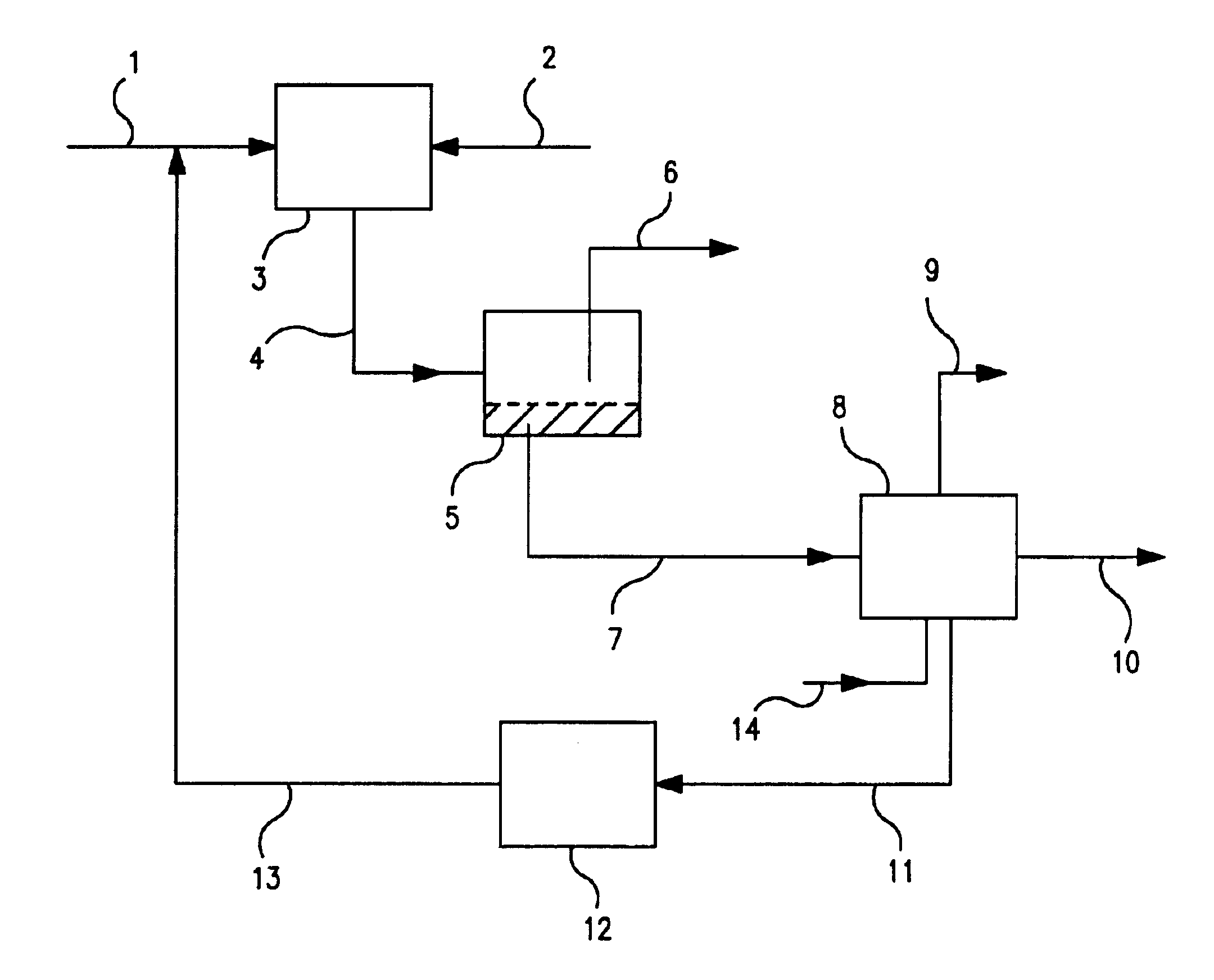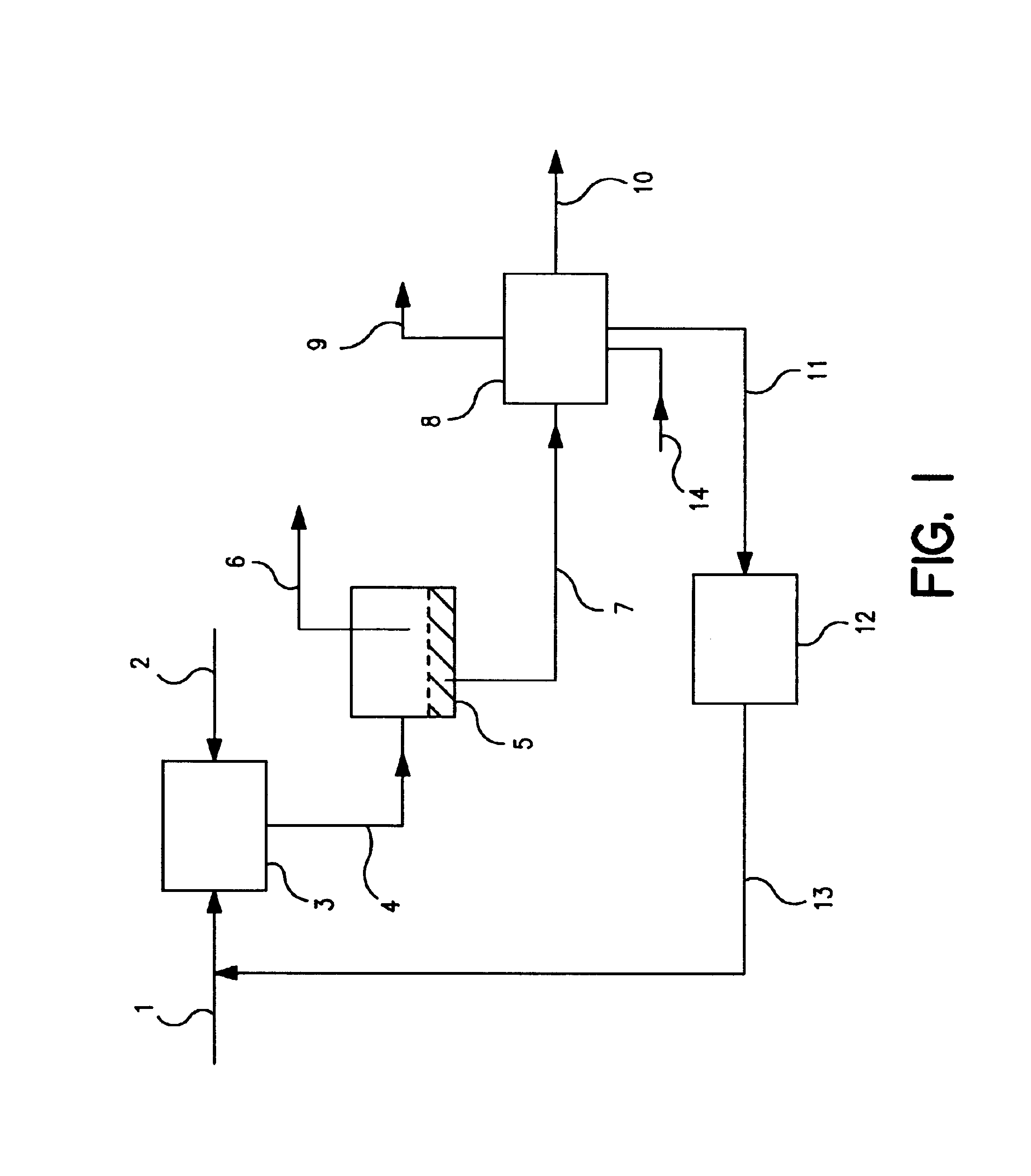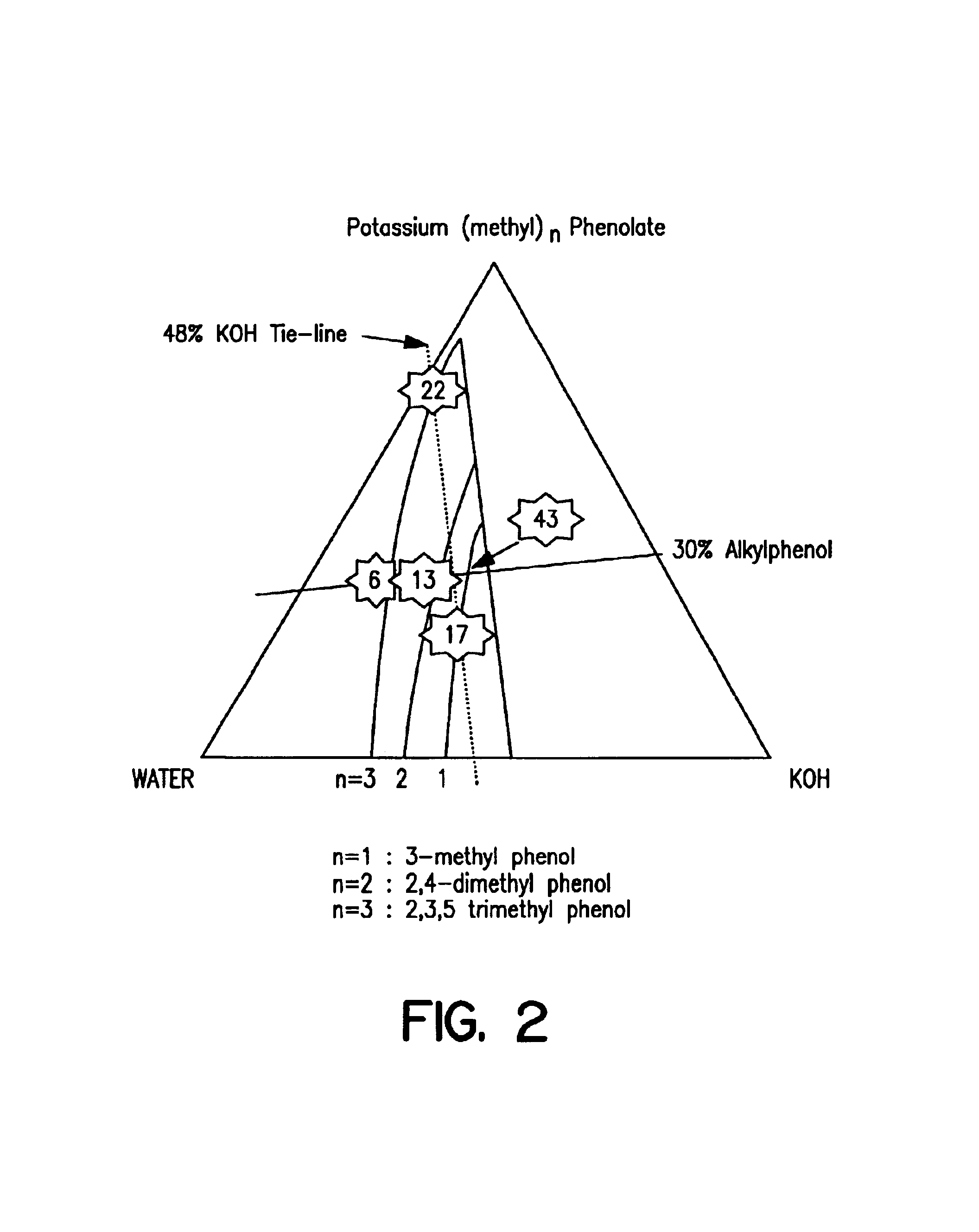Liquid hydrocarbon treatment method
a liquid hydrocarbon and treatment method technology, applied in the field of liquid hydrocarbon treatment methods, can solve the problems of small discontinuous regions, adversely affecting the subsequent hydrocarbon separation step, undetected entrapment, etc., and achieve the effect of reducing the concentration of mercaptan
- Summary
- Abstract
- Description
- Claims
- Application Information
AI Technical Summary
Benefits of technology
Problems solved by technology
Method used
Image
Examples
example 1
Impact of Sulfonated Cobalt Pthalocyanine on Droplet Size Distribution
A LASENTECH™ (Laser Sensor Technology, Inc., Redmond, Wash. USA), Focused Laser Beam Reflecatance Measuring Device (FBRM®) was used to monitor the size of dispersed aqueous potassium cresylate droplets in a continuous naphtha phase. The instrument measures the back-reflectance from a rapidly spinning laser beam to determine the distribution of “chord lengths” for particles that pass through the point of focus of the beam. In the case of spherical particles, the chord length is directly proportional to particle diameter. The data is collected as the number of counts per second sorted by chord length in one thousand linear size bins. Several hundred thousand chord lengths are typically measured per second to provide a statistically significant measure of chord length size distribution. This methodology is especially suited to detecting changes in this distribution as a function of changing process variables.
In this ...
example 2
Determination of Extraction Coefficients for Selectively Hydrotreated Naphtha
Determination of mercaptan extraction coefficient, Keq, was conducted as follows. About 50 m is of selectively hydrotreated naphtha was poured into a 250 ml Schlenck flask to which had been added a Teflon-coated stir bar. This flask was attached to an inert gas / vacuum manifold by rubber tubing. The naphtha was degassed by repeated evacuation / nitrogen refill cycles (20 times). Oxygen was removed during these experiments to prevent reacting the extracted mercaptide anions with oxygen, which would produce naphtha-soluble disulfides. Due to the relatively high volatility of naphtha at room temperature, two ten mls sample of the degassed naphtha were removed by syringe at this point to obtain total sulfur in the feed following degassing. Typically the sulfur content was increased by 2-7-wppm sulfur due to evaporative losses. Following degassing, the naphtha was placed in a temperature-controlled oil bath and equ...
example 3
Extraction Coefficients Determined At Constant Cresol Weight %
As is illustrated in FIG. 2 the area of the two-phase region in the phase diagram increases with alkylphenol molecular weight. These phase diagrams were determined experimentally by standard, conventional methods. The phase boundary line shifts as a function of molecular weight and also determines the composition of the extractant phase within the two-phase region. In order to compare the extractive power of two-phase extractants prepared from different molecular weight alkylphenols, extractants were prepared having a constant alkylphenol content in the top layer of about 30 wt. %. Accordingly, starting composition were selected for each of three different molecular weight alkylphenols to achieve this concentration in the extractant phase. On this basis, 3-methylphenol, 2,4-dimethylphenol and 2,3,5-trimethylphenol were compared and the results are depicted in FIG. 2.
The figure shows the phase boundary for each of the alky...
PUM
| Property | Measurement | Unit |
|---|---|---|
| pressure | aaaaa | aaaaa |
| temperature | aaaaa | aaaaa |
| viscosity | aaaaa | aaaaa |
Abstract
Description
Claims
Application Information
 Login to View More
Login to View More - R&D
- Intellectual Property
- Life Sciences
- Materials
- Tech Scout
- Unparalleled Data Quality
- Higher Quality Content
- 60% Fewer Hallucinations
Browse by: Latest US Patents, China's latest patents, Technical Efficacy Thesaurus, Application Domain, Technology Topic, Popular Technical Reports.
© 2025 PatSnap. All rights reserved.Legal|Privacy policy|Modern Slavery Act Transparency Statement|Sitemap|About US| Contact US: help@patsnap.com



